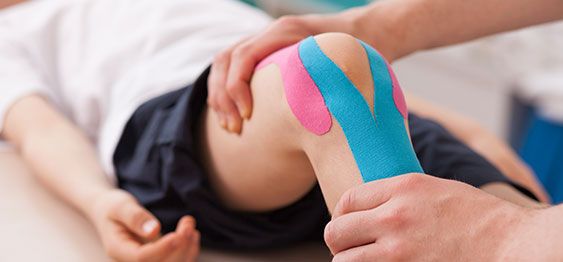Knee Pain: Physiotherapy as an Alternative to Surgery
A large number of people will experience knee pain in their lifetime, and this pervasiveness only grows with age.
Certain conditions frequently affect the knees and hips. These conditions can happen because of rehashed movement, traumatic injury, or interminable ailment.
Arthritis is a condition that includes aggravation of tissues that encompass the joints. This ailment can cause knee and hip pain.
Strains happen when a muscle or ligament is extended exorbitantly or torn. A sprain is an extended or torn tendon. Tendons may even burst, causing bruising, agony and restricted mobility.
The most common cause of knee pain is an injury to the meniscus, the cartilage between the knee bones. This can prompt knee pain, stiffness, and arthritis in the joints, and affects almost 40% of people over age 50, and almost 50% of people over 65.
Bursitis happens when a small sac of fluid known as the bursa becomes inflamed. This is often prompted by overuse or repetitive injuries. Bursitis can occur in a variety of positions in the body including the knees and hips.
The most popular method to fix all of these is arthroscopic surgery, which is performed over 2 million times each year across the globe.
Recent research from the British Medical Journal showed that arthroscopic surgery while presenting a very small improvement in pain after 3 months, did not expose any long-term benefits in knee pain, function, or quality of life 1-2 years down the road. The examination emphatically prescribes that we take a conservative management strategy when managing knee pain. That includes exercise therapy prescribed by a physiotherapist, as well as medication.
Regardless of what condition is causing your hip and knee pain, physiotherapy treatment can help relieve your pain. Your physiotherapist will assess your condition and formulate an individualized treatment plan to meet your specific needs. Range of motion and strength analyses may be taken during the physiotherapy evaluation. There are several treatment methods a physiotherapist may use to help soothe knee pain.
Certain conditions frequently affect the knees and hips. These conditions can happen because of rehashed movement, traumatic injury, or interminable ailment.
Arthritis is a condition that includes aggravation of tissues that encompass the joints. This ailment can cause knee and hip pain.
Strains happen when a muscle or ligament is extended exorbitantly or torn. A sprain is an extended or torn tendon. Tendons may even burst, causing bruising, agony and restricted mobility.
The most common cause of knee pain is an injury to the meniscus, the cartilage between the knee bones. This can prompt knee pain, stiffness, and arthritis in the joints, and affects almost 40% of people over age 50, and almost 50% of people over 65.
Bursitis happens when a small sac of fluid known as the bursa becomes inflamed. This is often prompted by overuse or repetitive injuries. Bursitis can occur in a variety of positions in the body including the knees and hips.
The most popular method to fix all of these is arthroscopic surgery, which is performed over 2 million times each year across the globe.
Recent research from the British Medical Journal showed that arthroscopic surgery while presenting a very small improvement in pain after 3 months, did not expose any long-term benefits in knee pain, function, or quality of life 1-2 years down the road. The examination emphatically prescribes that we take a conservative management strategy when managing knee pain. That includes exercise therapy prescribed by a physiotherapist, as well as medication.
Regardless of what condition is causing your hip and knee pain, physiotherapy treatment can help relieve your pain. Your physiotherapist will assess your condition and formulate an individualized treatment plan to meet your specific needs. Range of motion and strength analyses may be taken during the physiotherapy evaluation. There are several treatment methods a physiotherapist may use to help soothe knee pain.

:max_bytes(150000):strip_icc()/meniscusfinal-01-5c8fba21c9e77c00010e96f5.png)

Comments
Post a Comment